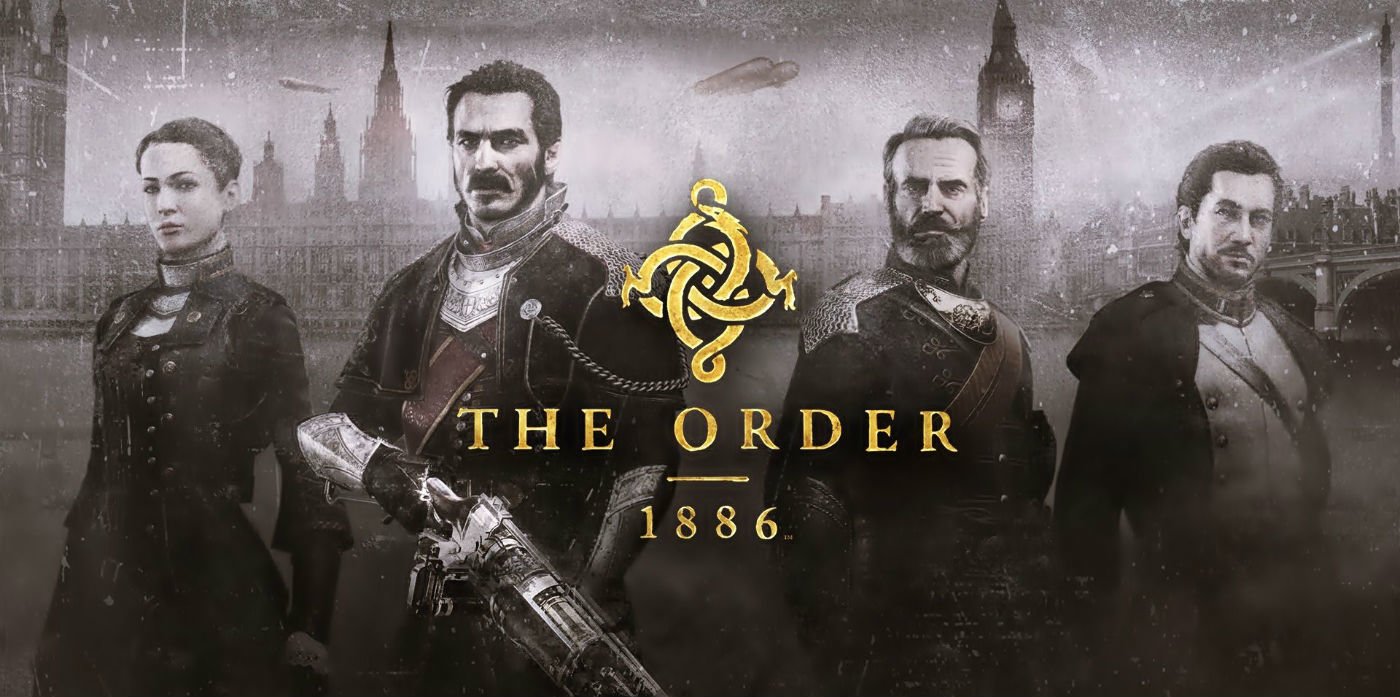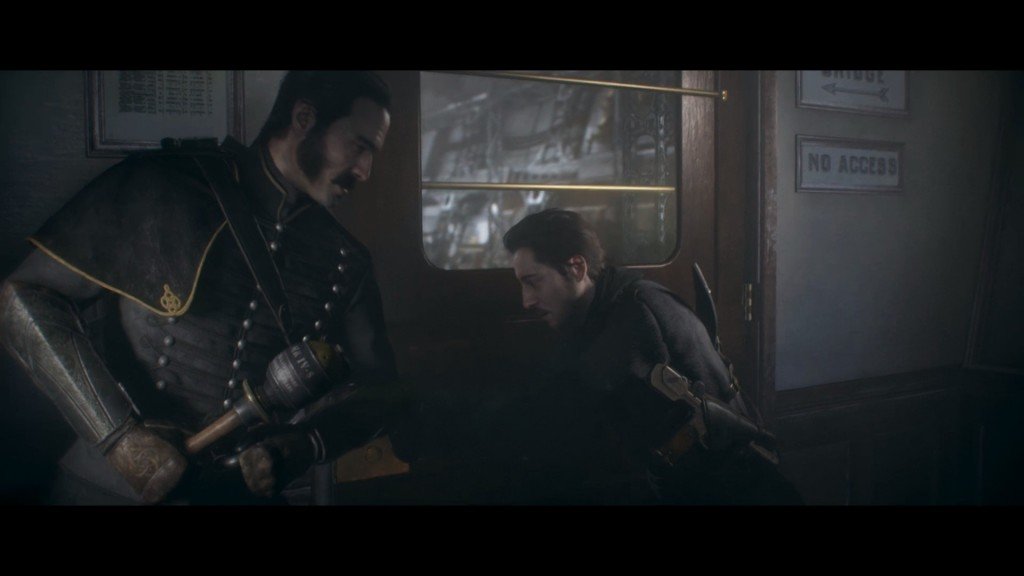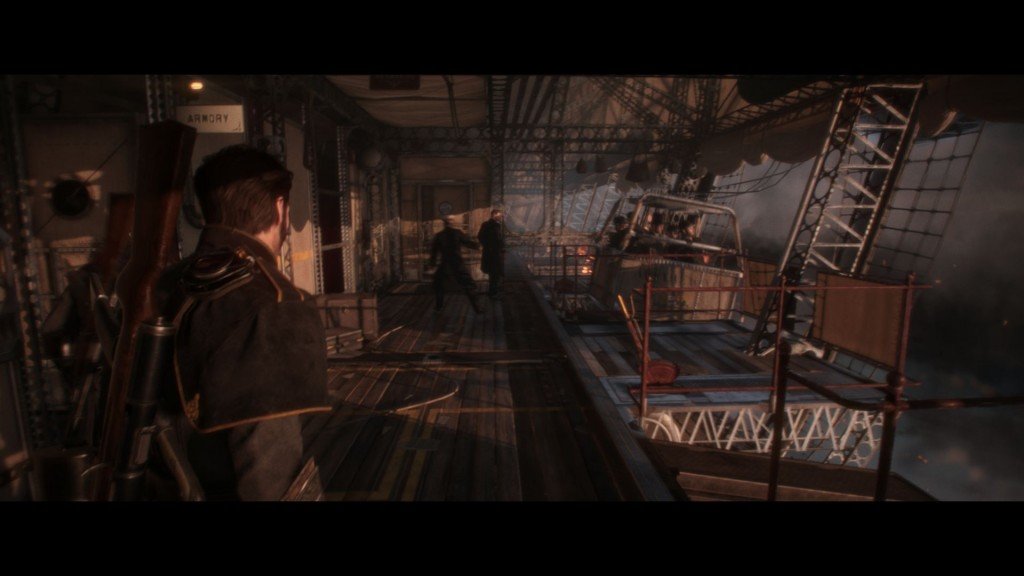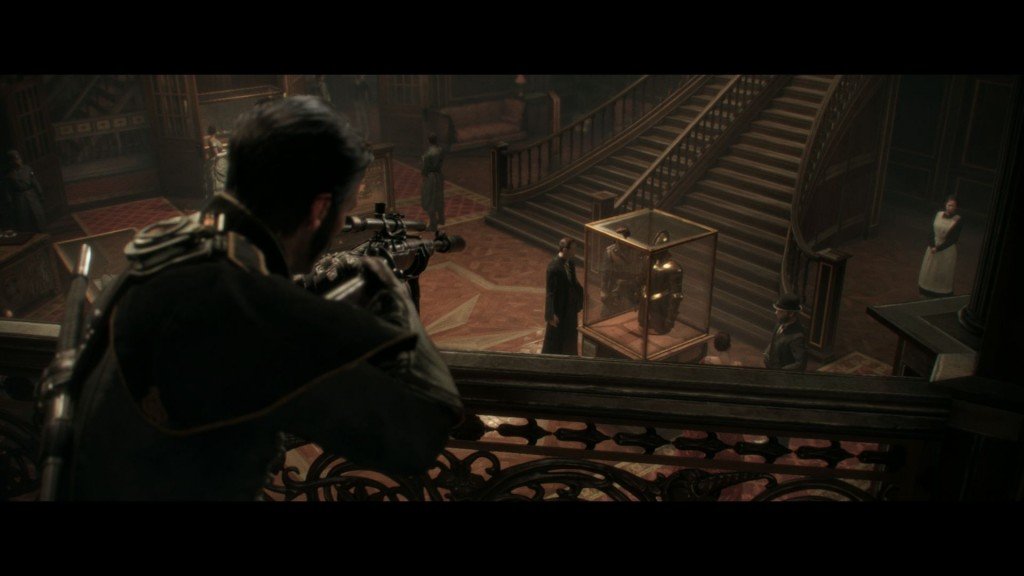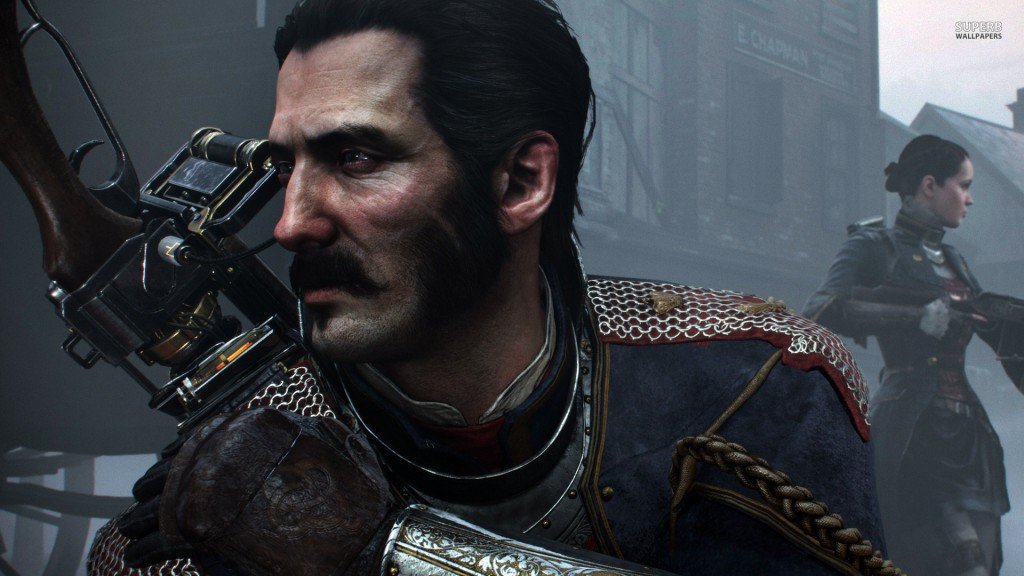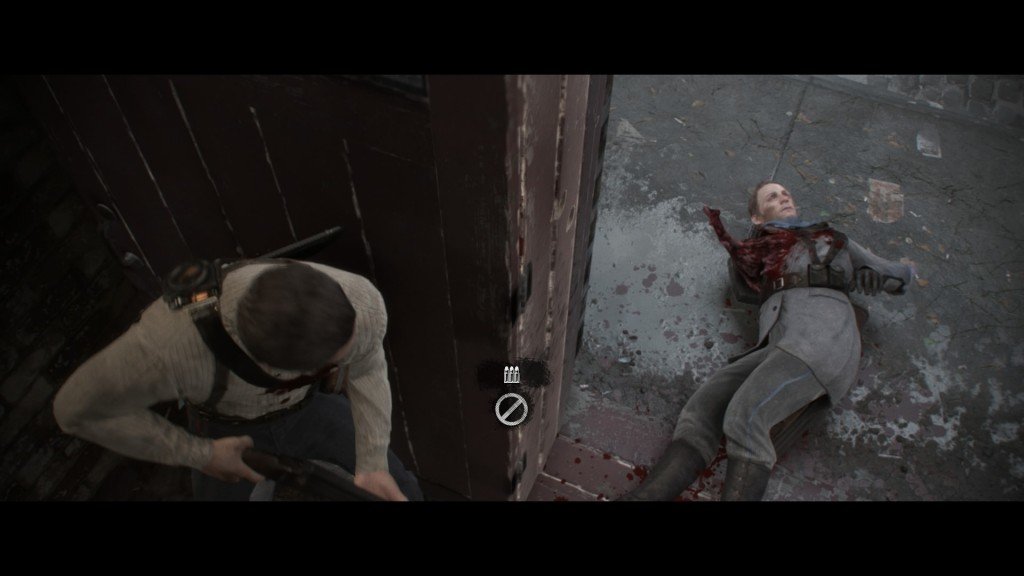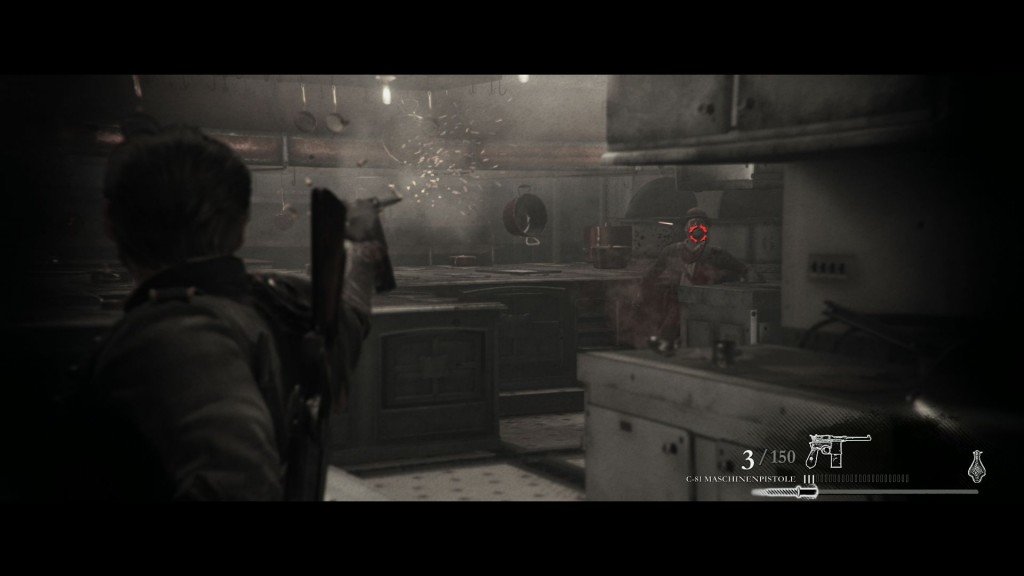I’ll start off by saying what we all know: The Order: 1886 looks good. Damn good. Probably the best-looking game of the past decade. It’s a shame that the truly next-gen visuals are grafted to bland shooting, awkward design, and an incomplete narrative.
The Order: 1886 is Ready at Dawn’s first new IP and their true console debut. After cutting their teeth on PSP titles for members of Sony’s roster like Kratos and Daxter, the studio has teamed up with Sony Santa Monica to deliver a tentpole game and kickstart a franchise.
Sony’s advertising campaign has been pushing The Order’s good looks, and they don’t disappoint. Animations are smooth, crisp, and transitions between gameplay and cinematics are seamless. Remember when we used to dream of that far-off time where games finally looked like the pre-rendered cutscenes? The Order is the natural evolution of that notion, where gameplay bleeds into cinematics and cutscenes become gameplay so smoothly that I kept forgetting which one was which.
Ready at Dawn makes these cutscenes interactive with a gratuitous use of quick time events, most of them tastefully implemented. This means, of course, that the game feels more like a playable movie than a real video game, especially when the coolest action sequences are just button presses. I won’t spoil anything here, but the final boss is one protracted quick time event. A well-directed action scene for sure, but one out of direct control.
The Order’s greatest technical accomplishments are the characters themselves. Costumes are lovingly crafted with intricate details like Lady Igraine’s lace and Sir Galahad’s buckles, belts, and plate armor accents– surely a vestige of what their uniforms used to look like. Facial animations also express subtle emotions with surprising effectiveness, which is bolstered by strong performances from the voice and motion cast. Sadly, players get stuck as the most boring character.
Galahad is a stoic Brit that loves things like honor and loyalty. He’d make a great Knight in real life, but as a character he’s flat. Galahad hints at his long, dark past, and that’s about it. He doesn’t have many opinions, flaws, or convictions other than saving the world and doing the right thing. His transformation throughout the game is a superficially drastic one. The character is simply too underwritten for his motivations to be believable. Honestly, the most interesting thing about Sir Galahad is his finely-groomed facial hair. Even then, I’d trade his killer moustache in for a chance to play as the smooth talking and passionate Marquis de Lafayatte or the exiled queen Lakshmi.
The plot itself lumbers along at a pretty slow pace for the first 75% of the game. The story only picks up for the last few chapters, kicked off by a chilling betrayal. Just as the stakes get raised and early details start paying off, the game abruptly ends. I’m not ready to talk about the game’s controversial length just yet, but I will say that a ten-hour game can tell just as good a story as a 50-hour RPG. Ready at Dawn chose to set the stage for a sequel by declining to wrap up any plot threads at all. Consequently, The Order feels more like the first ten hours of a much longer game, or the first act of a much more complete story.
When I did have the controller in hand and was actually playing this movie, I couldn’t help but notice that The Order wants to be two games at once. Ready at Dawn tries to accomplish this by combining the quiet, atmospheric exploration of The Last Of Us and the bombastic action setpieces of Gears Of War.
This combination doesn’t work, for a variety of reasons. The Order’s two modes, as I was compelled to call them, are divorced from each other so sharply that I felt I was playing two separate games cobbled together. The design strictly enforces either an exploration mode or a combat mode on the player. In most exploration mode areas, Galahad cannot draw his weapons, take cover, or even sprint. These actions are only available when you’re in the game’s combat mode, usually announced by a cutscene or quick-time event.
If I was ever feeling tense in exploration mode, all I had to do was press L2 and try to draw my weapon. If Galahad didn’t unholster his gun, there were no enemies around the corner waiting to rip my head off. No weapon, no enemies, no combat. In this way, The Order feels less like a game and more like a walking simulator punctuated by gunfights and set pieces.
There are redeeming chapters, though, and The Order is certainly at its best when Ready at Dawn scales down the action and pumps up the atmosphere. An early chapter turns the game on it’s head by going in a survival horror direction. The pace becomes slow and methodical as we explore Whitechapel’s abandoned hospital. A terrifying, powerful enemy stalks Galahad and ends in a thrilling boss fight. There isn’t much shooting in the claustrophobic hallways, and this is where Ready at Dawn’s nuanced lighting work and textured sound design really shine.
Chapters like this are counterbalanced by loud, ugly, and derivative shooting sequences that try, unsuccessfully, to ape Gears Of War. At the very least, The Order’s arsenal is varied and the gore is top-notch. The Arc Gun is my favorite, courtesy of Galahad’s buddy Nikola Tesla. This beast sends bolts of electricity towards enemies and makes their heads explode. Need I say more? I will. Shotguns can blast the legs and arms off of your foes. It’s also great fun to stun an enemy with the M2 Falchion’s secondary fire and then bash his head into a table with contextual melee kills.
The shooting sequences are, ultimately, functional and forgettable. Ready at Dawn also tries their hand at Splinter Cell by adding in a few ridiculous instant-fail stealth sections. The stealth gameplay is sloppy and feels more like an afterthought than any sort of well-planned gameplay system. Guards move in pre-determined paths and don’t react dynamically enough to be interesting. The singular option in the early chapters is a stealth takedown, which can only be executed from behind an enemy. If your target turns before you get to them, they kill you automatically. Later on, you get a laughably overpowered crossbow that kills in one hit and is absolutely silent. It’s as if Ready at Dawn realized mid-way through development that the stealth mechanics weren’t developed enough to carry an extended sequence.
The Order: 1886 mixes in a few more gameplay wrinkles over the course of the campaign that all feel similarly tacked on to an incomplete fundamental design. If Ready at Dawn committed to either over-the-top action or moody exploration, the game would be better for it.
It’s impossible to talk about The Order without at least addressing the controversies of game length and replayability. I’ll be frank: there isn’t much replay value or content past the ten hours I got for my $60. DLC is unannounced and, therefore, off the table for now. I don’t feel ripped off, mostly because the time and effort that Ready at Dawn put into this game is obvious throughout. Despite the flaws, it was a fun ride that I can recommend to anyone who wants to watch a movie in between shooting some bad guys and fighting werewolves.
Beyond the seriously stunning visuals (I truly think this might be the prettiest game of all time), there are only a few decent gameplay ideas to be found. I want to hop back into Ready at Dawn’s world, because I desperately want to like The Order more than I did.
At the end of the day, flawless graphical fidelity can’t save mediocre game design. If you want to make a game that’s a film, both aspects must be strong enough to stand by themselves. The Last Of Us has a gripping story that would dazzle audiences in a movie theater, just like the gameplay would impress even if removed from the narrative. The Order, on the other hand, is a decent fantasy movie living in the gaps of a nothing-special video game– a ten-hour sizzle real for something much, much greater.
This review is based on a retail copy of the PlayStation 4 version of The Order: 1886 developed by Ready at Dawn, published by Sony Computer Entertainment
- Era-defining visuals, production value, and animations
- Seamless blending of gameplay and cinematics
- Unique world in an unexplored time period
- Sloppy shooting mechanics and poorly-implemented stealth gameplay
- Dull protagonist in a plot that feels like a prologue
- Cliffhanger ending and low replay value

